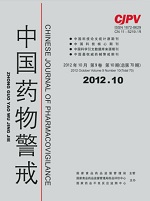|
|
Analysis and Ponder of American Medical Device Trace Requirements
JIA Jian-xiong, MENG Gang
2012, 9(10):
601-604.
This paper mainly analyzes the requirements of American medical equipment listed trace, and concludes its characteristics, such as laws and regulations, involving products, manufacturers and distributors responsibility, and summarizes its traceability system, inspection measures and product list characteristics, and then puts forward that the premarket laboratory research data, animal test data and small sample short-term clinical data can not fully express the instrument of all performance medical devices forward safety and effectiveness, and must go through long-term clinical follow-up to obtain the information. The proposal is to establish a particular high-risk implanted medical device listed trace in our country, in order to ensure the traceability of products and good for scientific evaluation with the long-term clinical results. To construct traceability system based on the high-risk products and new registered product traceability laws and regulations, and take the register as the technical means, and make the manufacturer and agency to be the main body in the traceability system. At the same time, let the industry association carry out their consultation, coordination, supervision and service enterprise social functions, strengthen the manufacturers' self-discipline, and make the product traceability system go smoothly so as to guarantee the public with safety, and effective ness.
References |
Related Articles |
Metrics
|
